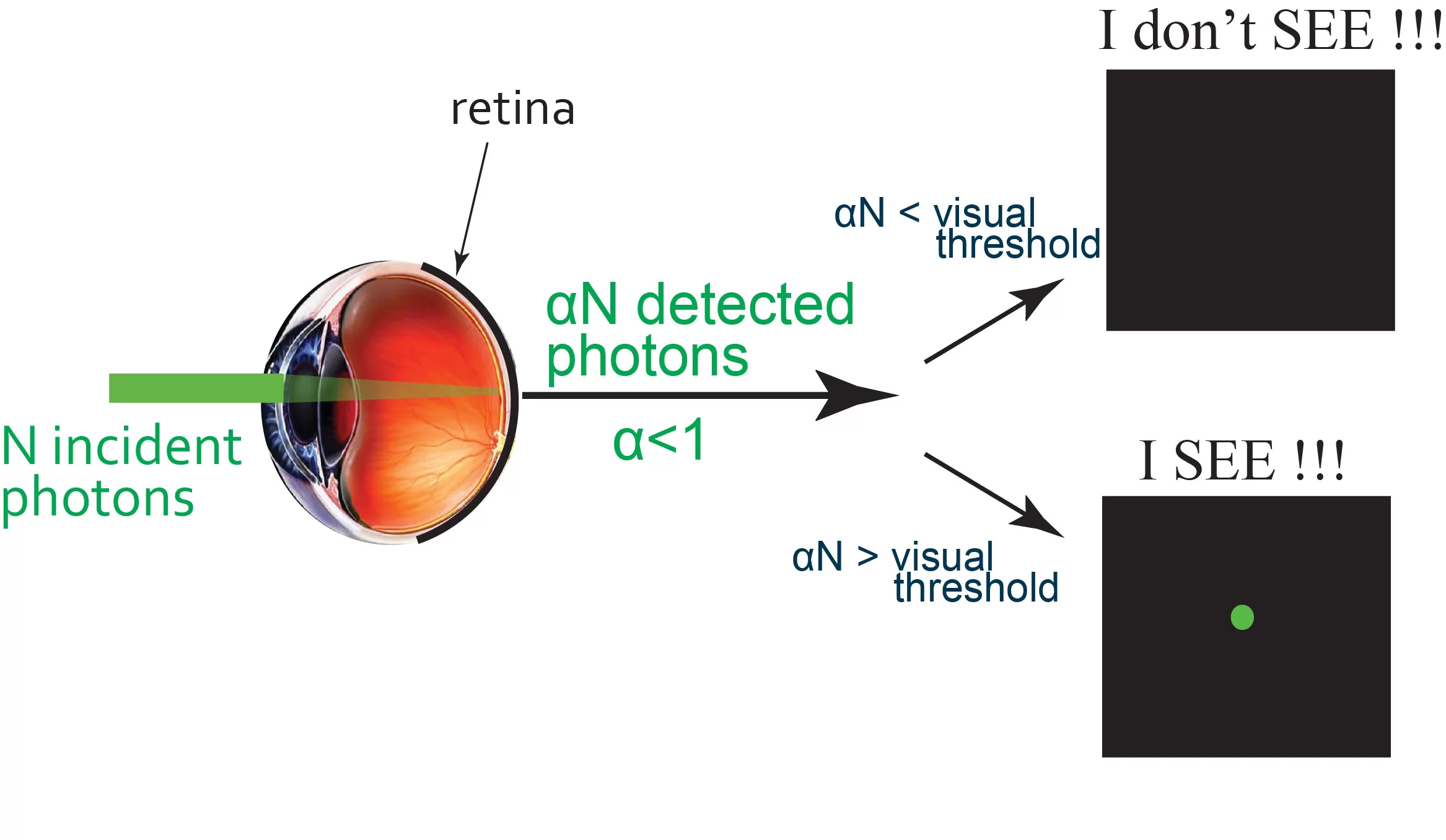Quantum Biometrics
Unbreakable biometric authentication

Biometrics is about identifying people through unique characteristics. A traditional method has been fingerprinting. Modern methods include face recognition and iris scans. The common shortcoming of all existing technologies is that nothing prevents an impostor wishing to maliciously impersonate somebody to mimic his/her biometric characteristics. We have developed the first quantum biometric methodology, the security of which is unbreakable due to its operating principles relying on the quantum physics of photodetection and the human visual system’s ability to perform photon counting. Simply stated, we have devised a complex “quantum fingerprint” involving the eye, the retina and the brain, which fingerprint is probed by specifically designed light stimulating the visual system.
Our biometric method is based on the measurement of the optical losses suffered by light in its path from the cornea towards the retina. If we use a small number of photons incident on the eye, the optical losses will be critical, since depending on them, the subject might or might not perceive the flash of light with a comparable probability. These losses are quantified by a parameter a, in fact by a whole a-map derived from several different optical paths from the cornea to the retina. After once registering the user’s a-map, the user can be quickly authenticated from his/her responses on the perception of weak light patterns. Importantly, we prove that no matter how technologically sophisticated an impostor might be, there is no tactic he could use to circumvent the authentication process, either methodologically or physically.


To illustrate the workings of our quantum biometric methodology, suppose we illuminate the eye with 25 pixels. At high intensity everybody will perceive a pattern of 5×5 pixels. But at low enough intensity every person will perceive a different pattern, since the optical losses along the beam path towards the retina are different for different subjects. Thus we can address the visual perception of individuals.